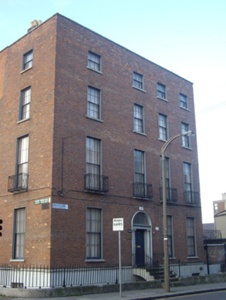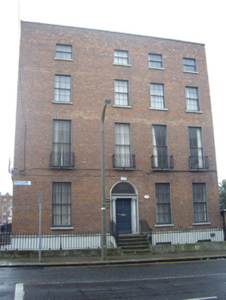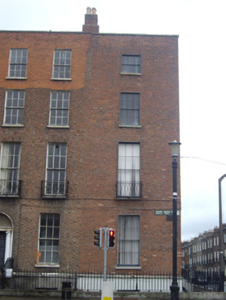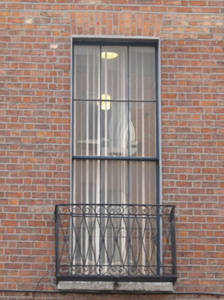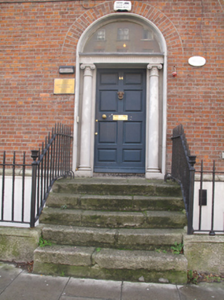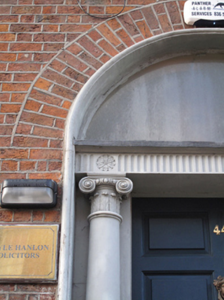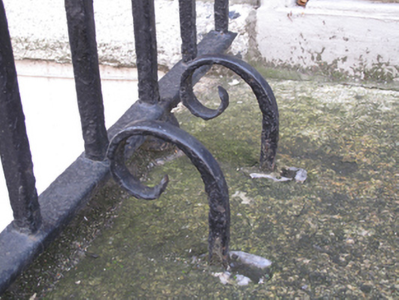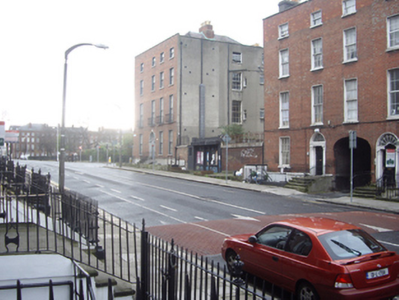Survey Data
Reg No
50010806
Rating
Regional
Categories of Special Interest
Architectural, Artistic
Original Use
House
In Use As
Office
Date
1795 - 1815
Coordinates
316072, 235551
Date Recorded
02/12/2011
Date Updated
--/--/--
Description
Corner-sited end-of-terrace four-bay four-storey house over raised basement, built c.1805, with single-bay south side elevation fronting onto Mountjoy Square. Recently restored and now in commercial office use. Pie-ended slate roof with flat copper-clad top and pair of brick chimneystacks to west party wall having clay pots. Roof hidden behind parapet wall with granite coping and cast-iron hoppers and downpipes to north side elevation. Red brick walls laid in Flemish bond on chamfered granite plinth course over rendered basement walls. Cement rendered walls to north rear elevation. Gauged brick flat-arched window openings with granite sills and replacement timber sliding sash windows, three-over-three pane to top floor, six-over-six pane elsewhere. Wrought-iron balconettes to first floor windows. Gauged brick round-arched door opening with moulded surround and painted stone Ionic doorcase, with replacement timber door with eight raised and fielded panels flanked by engaged Ionic columns on plinth bases supporting fluted lintel cornice and plain fanlight. Door opens onto granite platform with two wrought-iron bootscrapers and five granite steps, bridging basement area. Platform and basement enclosed by wrought-iron railings set on moulded granite plinth wall to street, returning to south side elevation. Matching iron gate to north with steel steps providing basement access.
Appraisal
Differing in plan from the standard mid-terrace houses, No. 44 has a central staircase with two rooms opening off to each side and 'bookends' the terrace. The house presents one bay to Mountjoy Square and, together with its original Ionic doorcase, granite platform and steps, and correct replacement fenestration, makes a particularly significant contribution to the architectural integrity of the terrace and of Mountjoy Square. The decorative balconettes to the first floor add visual interest. Mountjoy Square was built on lands formerly belonging to Saint Mary’s Abbey, laid out in 1790 by Luke Gardiner II, and completed by 1818. Originally called Gardiner Square, the plan was to develop a strong vista from the Custom House to Mountjoy Square, then on to the intended Royal Circus. Although failing to achieve his original ambitious plan for a palace façade with flanking domed pavilions, Mountjoy Square is more carefully laid out than the city’s other Georgian squares. It is symmetrical and has a unified parapet height and the east-west approaches were offset to create a sense of enclosure. After falling into serious neglect and dereliction throughout the twentieth century, resulting in the loss of one third of its original buildings, the square has since been repaired.

